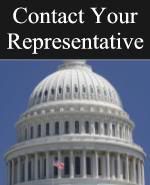Sometimes Secrets are Hidden in Plain Sight
Over the past few months much has been made of the possibility of the enactment of immigration reform by the current Congress. The President has promised on numerous occasions to make immigration reform a top priority, Senate Majority Leader, Harry Reid (D-NV), has assured that he has the votes to move legislation forward, and the Chairman of the Senate Immigration Subcommittee, Chuck Schumer (D-NY), who will take the lead on crafting any new legislation, has laid out a seven-point blueprint for new legislation.
Against this backdrop, advocacy groups are ramping up campaigns to lobby legislators and mobilize activists to aid in the upcoming battle. And while the effort to coalesce a unified front by the pro-reform forces is unprecedented, having both a level of organization and outreach unseen in past legislative battles, the campaign thus far has been long on familiar sloganeering and promises to trust the DC establishment to do the right thing, and very short on the specifics of what any new legislation will look like.
As those of us who have engaged in past reform battles know, (albeit more as outsiders and observers than real participants at the table), the devil really is in the details of any legislation, and those details are, more often than not, kept secret until the very last moments.
During the 2007 battle, much of the "compromise" part of the Grand Compromise was kept under wraps until the legislation was about to be moved to the Senate floor for the amendment process. In fact, a strategy to revise the legislation after passage in both houses, while in Conference Committee, or through legal challenge, was only revealed by DC insiders after the bill had already crashed and burned.
Those advocacy groups who have been privy to the past efforts to craft legislation have often acted unilaterally, without the knowledge of friends, allies, and those they claim to represent, to decide what principles and policies they believe are negotiable and expendable in the quest of compromise and consensus.
With that past history in mind, the current ambiguity surrounding the coming legislative battle becomes all the more troubling.
To say we have received mixed messages from both the administration and Democratic leadership would be a gross understatement. While talking about substantive change and reform that will be practical and truly humane on the one hand, we hear much familiar rhetoric and jargon that reinforces the failed enforcement centric policies of the past.
In fact, in just the past week we saw the passage of enforcement-only amendments in the Democratic lead Senate, and a reaffirmation of the administration's commitment to the failed Bush- era programs like E-Verify and (287)G. And while some argue that the political posturing and grandstanding we witnessed last week are just that … only political theater …. it is clear that without presenting clear principles, and a vision of what real meaningful reform will look like, we are left with little more to judge these actions by than the usual DC tendency to talk out of both sides of their mouths simultaneously.
Even in cases where the political leadership has laid out a rough blueprint for reform, it has raised more concerns and questions than reassurances and answers. Senator Schumer's seven-point guideline is a case in point:
In all, Schumer announced seven principles that he said would form the basis for the legislation he intends to introduce by the fall:
1. Illegal immigration is wrong, and a primary goal of comprehensive immigration reform must be to dramatically curtail future illegal immigration.
2. Operational control of our borders--through significant additional increases in infrastructure, technology, and border personnel--must be achieved within a year of enactment of legislation.
3. A biometric-based employer verification system—with tough enforcement and auditing—is necessary to significantly diminish the job magnet that attracts illegal aliens to the United States and to provide certainty and simplicity for employers.
4. All illegal aliens present in the United States on the date of enactment of our bill must quickly register their presence with the United States Government—and submit to a rigorous process of converting to legal status and earning a path to citizenship—or face imminent deportation.
5. Family reunification is a cornerstone value of our immigration system. By dramatically reducing illegal immigration, we can create more room for both family immigration and employment-based immigration.
6. We must encourage the world’s best and brightest individuals to come to the United States and create the new technologies and businesses that will employ countless American workers, but must discourage businesses from using our immigration laws as a means to obtain temporary and less-expensive foreign labor to replace capable American workers; and finally
7. We must create a system that converts the current flow of unskilled illegal immigrants into the United States into a more manageable and controlled flow of legal immigrants who can be absorbed by our economy.
Sen. Chuck Schumer
Schumer's reliance on increased border control and "tough enforcement" offers little new insight or leadership and owes more ideologically to the failed efforts of the past than any constructive model to actually effect meaningful change. And while he has clearly offered a more substantive picture of future reform than the administration, Schumer still leaves more questions than answers about legislative specifics.
The fact that this "new" initiative was welcomed by the DC advocacy establishment with few questions asked leaves one to wonder exactly how much has been learned from past failures, and perhaps more importantly, how much real change are they willing to fight for.
Yet, it is just this ambiguity and lack of specifics about future legislation that has allowed DC advocates and their Democratic allies to build an impressive new coalition and organizational infrastructure.
Playing a game of "we'll just have to wait and see what the legislation looks like", has allowed them to be all things to all people. Making promises that will never be kept and playing on the hopes of those seeking real change.
But luckily for us, an actual comprehensive blueprint for what the "middle ground" on immigration reform will look like was published last week by The Council on Foreign Relations.
The almost 150 page study, written by a panel headed by former Florida Governor Jeb Bush and Clinton Chief of Staff Thomas F. "Mack" McLarty III gives us perhaps the clearest indicators of where the triangulation on immigration reform will end up. … A secret clearly kept in plain sight.
And while the report makes some very sound and promising observations and recommendations, it also makes some that are highly troubling and others that are downright dangerous.
It divides the immigrant population into two segments; those deemed highly desirable (skilled, educated, English-speaking) and those deemed less desirable (unskilled workers) and suggests setting up a two tiered system whereby "desirable" immigrants are not only welcomed, but actively recruited, while the unskilled are subject to quotas, or must enter as guest workers. It endorses biometric data collection on workers to assure eligibility to work legally in the country, calls for increased enforcement both at the border and workplace, and supports increased enforcement cooperation between state, local and the federal government.
Many of the mainstream advocacy groups welcomed this report last week citing its clear call for comprehensive reform as a sign of progress and forward movement … but none addressed some of the more troubling recommendations it contained. ….But don’t worry … I'll be covering them in depth later in the week
If this study represents a starting point … the middle ground … from where the debate will proceed, we'll be in deep trouble again going forward.
We have already heard the same rhetoric contained in the report parroted by Reid, Schumer, and the administration.... Leading one to believe that it represents a consensus view.
And if those advocacy groups in Washington who supposedly represent the interests of the migrant population believe that this too is an acceptable "middle ground" from which negotiations should proceed it might be time for them to reexamine their priorities.

































No comments:
Post a Comment